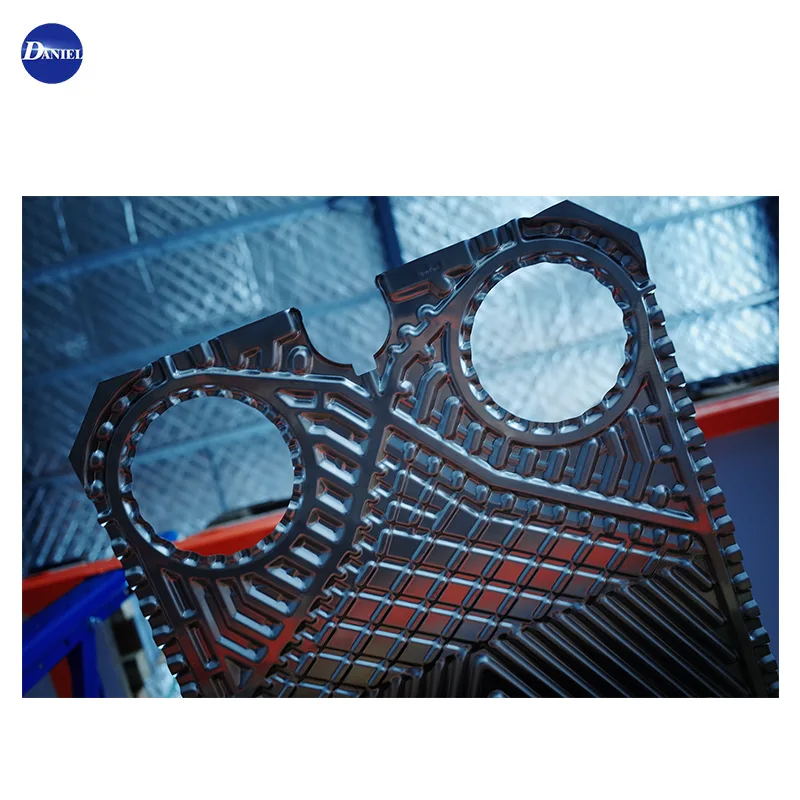
 English
English  Español
Español Português
Português русский
русский Français
Français 日本語
日本語 Deutsch
Deutsch tiếng Việt
tiếng Việt Italiano
Italiano Nederlands
Nederlands ภาษาไทย
ภาษาไทย Polski
Polski 한국어
한국어 Svenska
Svenska magyar
magyar Malay
Malay বাংলা ভাষার
বাংলা ভাষার Dansk
Dansk Suomi
Suomi हिन्दी
हिन्दी Pilipino
Pilipino Türkçe
Türkçe Gaeilge
Gaeilge العربية
العربية Indonesia
Indonesia Norsk
Norsk تمل
تمل český
český ελληνικά
ελληνικά український
український Javanese
Javanese فارسی
فارسی தமிழ்
தமிழ் తెలుగు
తెలుగు नेपाली
नेपाली Burmese
Burmese български
български ລາວ
ລາວ Latine
Latine Қазақша
Қазақша Euskal
Euskal Azərbaycan
Azərbaycan Slovenský jazyk
Slovenský jazyk Македонски
Македонски Lietuvos
Lietuvos Eesti Keel
Eesti Keel Română
Română Slovenski
Slovenski मराठी
मराठी Srpski језик
Srpski језик
Why Is a Plate Heat Exchanger Gasket Essential for Reliable Thermal Performance?
2025-11-20
A high-quality Plate Heat Exchanger Gasket is the key sealing component that ensures efficiency, durability, and stable operation in heat exchange systems across HVAC, chemical processing, food, and industrial cooling applications. Designed to provide leak-free performance, gaskets enable plates to maintain proper flow channels and temperature transfer. When I work with customers selecting replacement gaskets, I often ask: How do you confirm the right material? Why does thickness matter? What conditions will the gasket face? These questions guide the right purchasing decision and ensure system reliability.
What Are the Key Functions of a Plate Heat Exchanger Gasket?
A Plate Heat Exchanger Gasket plays several critical roles:
-
Ensures tight sealing between heat exchanger plates
-
Prevents fluid cross-contamination
-
Maintains channel pressure and flow direction
-
Enhances thermal efficiency
-
Extends equipment service life
Without a well-matched gasket, even the most advanced plate heat exchanger will suffer from leakage, pressure loss, and reduced heat transfer performance.
How Do the Product Parameters Influence Performance?
To help users understand the technical details, below is a structured parameter table commonly used at Jiangyin Daniel Cooler Co., Ltd. for Plate Heat Exchanger Gasket specifications:
Plate Heat Exchanger Gasket Parameters
| Parameter Category | Specification Options |
|---|---|
| Material | NBR, EPDM, HNBR, Viton (FKM), Silicone |
| Temperature Range | -20°C to 180°C (depending on material) |
| Working Pressure | 0.6 MPa – 2.5 MPa |
| Gasket Thickness | 2.0 mm – 5.0 mm |
| Connection Type | Clip-on / Glued |
| Suitable Media | Water, steam, oil, glycol, chemical fluids |
| Plate Compatibility | Wide range of PHE brands and models |
Why Do Different Materials Matter for Plate Heat Exchanger Gasket Selection?
Different working conditions demand gaskets formulated to resist heat, chemicals, and compression set. For example:
-
NBR: Suitable for oil-based media
-
EPDM: Ideal for high-temperature water and steam
-
Viton (FKM): Excellent chemical resistance
-
HNBR: Enhanced durability under high mechanical stress
Choosing the correct material helps reduce downtime and maintenance costs while improving safety.
How Does a Plate Heat Exchanger Gasket Improve Operational Results?
A well-engineered gasket directly improves system performance:
-
Provides stable sealing even under fluctuating pressure
-
Reduces energy loss by maintaining proper plate alignment
-
Prevents shutdowns caused by leakage
-
Enhances heat transfer efficiency through consistent flow channels
Users often report longer service cycles and lower operational costs after upgrading to premium gaskets from Jiangyin Daniel Cooler Co., Ltd.
Why Is the Importance of Plate Heat Exchanger Gasket Increasing in Modern Industries?
As industries adopt higher-efficiency systems and stricter environmental standards, gasket quality becomes more crucial because:
-
Energy savings depend on leak-free operation
-
Chemical safety regulations require reliable sealing
-
Modern PHE designs operate at higher pressure and temperature
-
Frequent thermal cycling demands durable materials
A high-performance Plate Heat Exchanger Gasket is now considered an essential component—not an accessory.
Frequently Asked Questions (FAQ) About Plate Heat Exchanger Gasket
Q1: How do I choose the right Plate Heat Exchanger Gasket for my system?
A1: Selection depends on plate model, working temperature, medium type, and pressure. Providing these details helps ensure the gasket perfectly matches your heat exchanger.
Q2: How often should a Plate Heat Exchanger Gasket be replaced?
A2: Replacement frequency varies, but most systems require new gaskets every 1–3 years depending on operation cycles, media composition, and maintenance practices.
Q3: What materials are best for high-temperature applications in Plate Heat Exchanger Gaskets?
A3: EPDM and Viton (FKM) offer superior heat resistance, maintaining stable performance at elevated temperatures without deformation.
Q4: Can a Plate Heat Exchanger Gasket enhance energy efficiency?
A4: Yes, by ensuring stable sealing and preventing channel leakage, gaskets maintain optimal heat transfer efficiency, reducing overall energy consumption.
How to Contact Us for Customized Plate Heat Exchanger Gasket Solutions?
If you need precision-fit gaskets, special materials, or replacement solutions for major PHE brands, Jiangyin Daniel Cooler Co., Ltd. offers professional engineering support and stable supply capacity.
Feel free to contact our team for detailed product specifications, quotations, or technical guidance—your heat exchanger performance starts with the right gasket.






